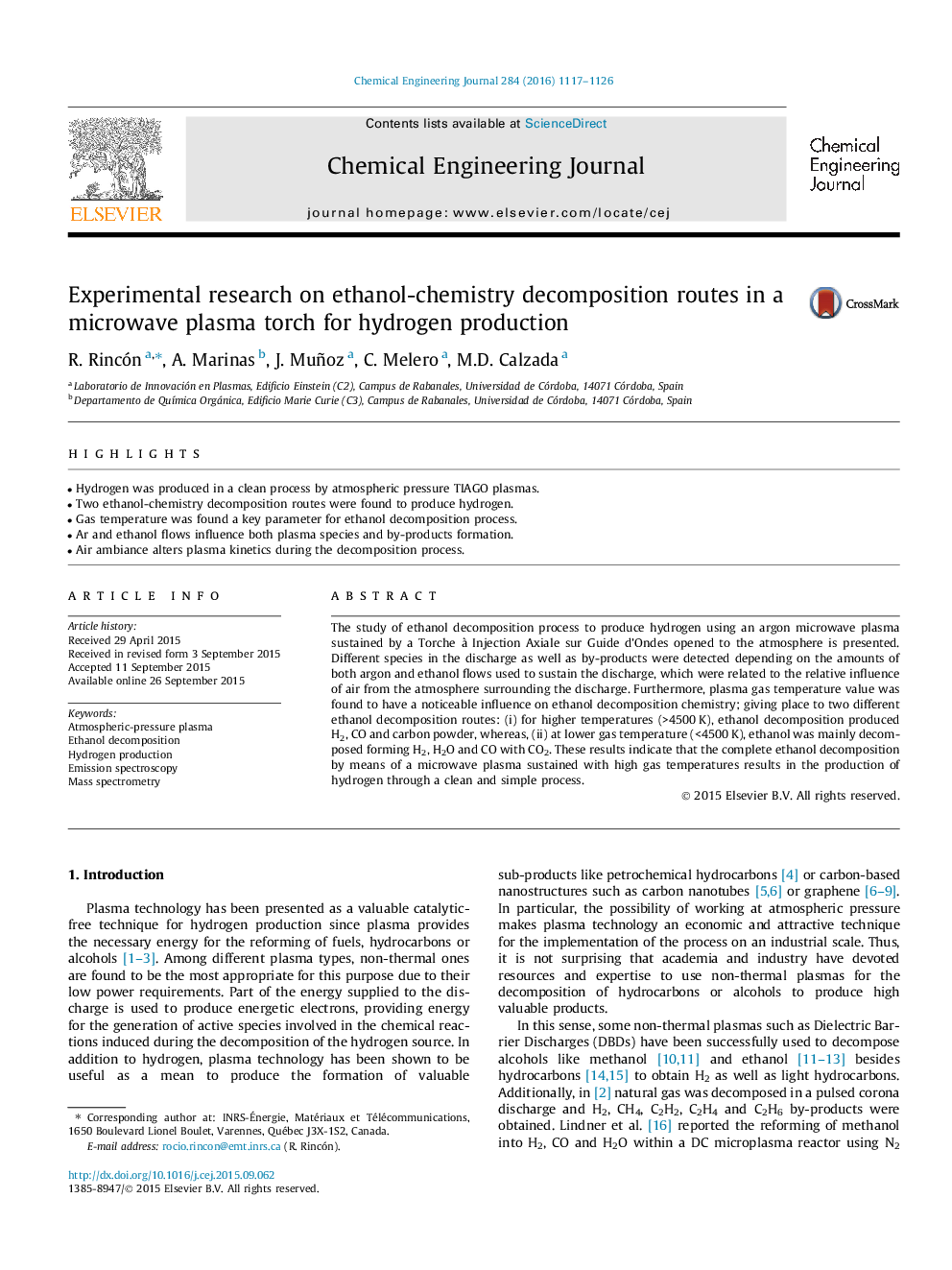| Article ID | Journal | Published Year | Pages | File Type |
|---|---|---|---|---|
| 146020 | Chemical Engineering Journal | 2016 | 10 Pages |
•Hydrogen was produced in a clean process by atmospheric pressure TIAGO plasmas.•Two ethanol-chemistry decomposition routes were found to produce hydrogen.•Gas temperature was found a key parameter for ethanol decomposition process.•Ar and ethanol flows influence both plasma species and by-products formation.•Air ambiance alters plasma kinetics during the decomposition process.
The study of ethanol decomposition process to produce hydrogen using an argon microwave plasma sustained by a Torche à Injection Axiale sur Guide d’Ondes opened to the atmosphere is presented. Different species in the discharge as well as by-products were detected depending on the amounts of both argon and ethanol flows used to sustain the discharge, which were related to the relative influence of air from the atmosphere surrounding the discharge. Furthermore, plasma gas temperature value was found to have a noticeable influence on ethanol decomposition chemistry; giving place to two different ethanol decomposition routes: (i) for higher temperatures (>4500 K), ethanol decomposition produced H2, CO and carbon powder, whereas, (ii) at lower gas temperature (<4500 K), ethanol was mainly decomposed forming H2, H2O and CO with CO2. These results indicate that the complete ethanol decomposition by means of a microwave plasma sustained with high gas temperatures results in the production of hydrogen through a clean and simple process.
